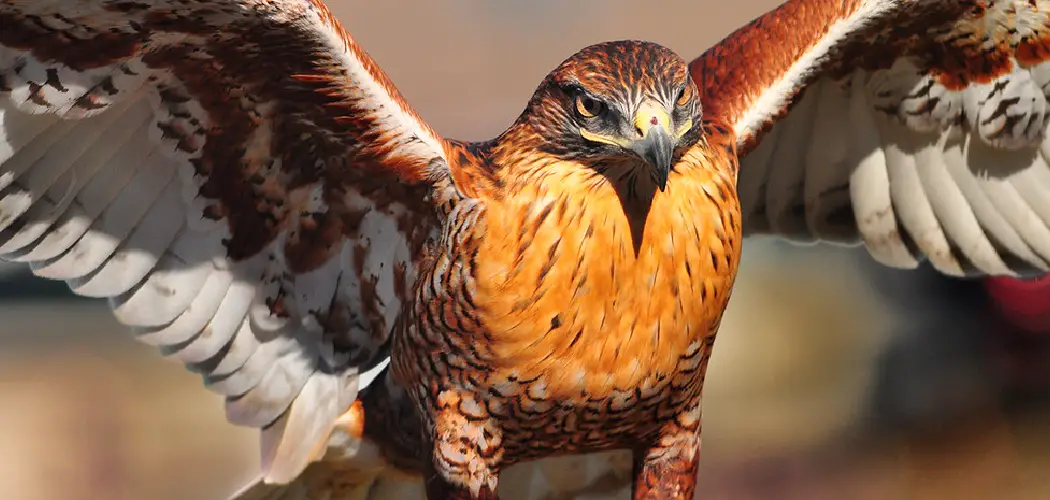Hawks are majestic birds of prey, often admired for their keen eyesight and hunting prowess. However, for those who raise backyard poultry or care for small pets, the presence of hawks can pose a serious threat. Learning how to deter these skilled predators effectively is crucial to protecting your vulnerable animals without harming the hawks.
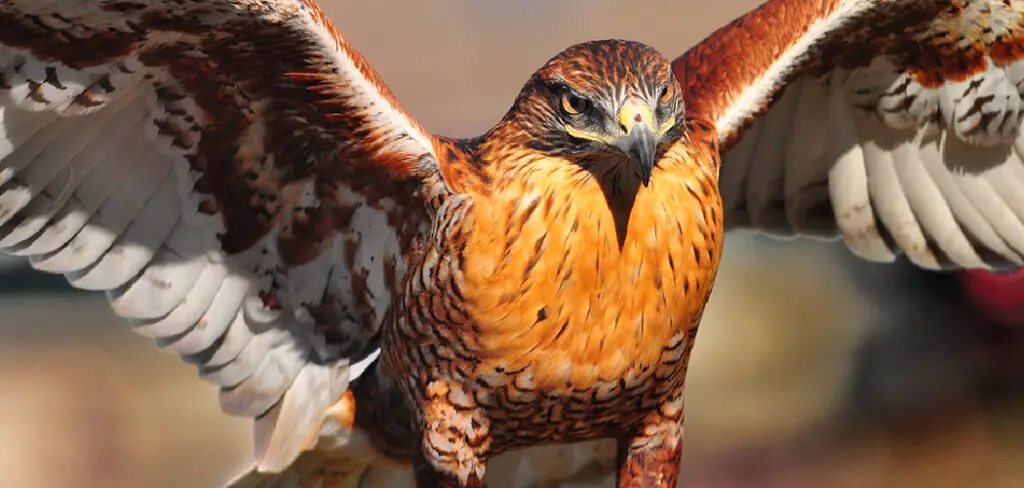
In the following sections on how to deter hawks, we will explore humane and effective strategies for keeping hawks at bay, ensuring the safety of your animals while respecting these protected birds.
What is a Hawk?
Before we delve into methods for deterring hawks, it’s important to understand what exactly they are. Hawks belong to the genus Accipiter and are closely related to eagles, falcons, and kites. They are predatory birds with sharp talons and powerful wings, making them efficient hunters of small animals such as rodents, rabbits, and birds.
Hawks are found all over the world, with different species adapting to various habitats and prey. In North America, the most common hawks include Cooper’s Hawk, Sharp-shinned Hawk, Red-tailed Hawk, and Northern Goshawk. It’s essential to note that hawks are protected under the Migratory Bird Treaty Act, making it illegal to harm or kill them without proper permits. Therefore, the focus should be on non-lethal methods for deterring hawks.
Why Do Hawks Hunt Small Animals?
Hawks primarily hunt small animals because they have evolved to do so. Their sharp talons and hooked beaks are perfect for catching and killing their prey, which includes a variety of small mammals and birds. For some species of hawks, hunting smaller animals is also a survival strategy as they may not be able to compete with larger predators for bigger prey. Additionally, hawks play an essential role in balancing ecosystems by keeping populations of small animals in check. The presence of hawks is crucial for maintaining a healthy and diverse environment. The issue arises when hawks start targeting domestic animals, leading to a conflict between their natural behavior and human interests.
Needed Tools and Materials
Before implementing any strategies for deterring hawks, it’s important to gather the necessary tools and materials. Here are some items you may need:
Netting or Fencing Material:
This will be used to create barriers around your property or poultry enclosures.
Reflective Tape or Scare Devices:
These can be hung near areas where hawks are commonly seen to deter them with movement and noise. But be mindful of the placement, as scare devices can also startle other animals or birds in the area.

Roosting Deterrents:
These are spikes or barriers that can be placed on flat surfaces to discourage hawks from roosting. You can also use fake predators, such as plastic owls or snakes, to intimidate hawks.
Motion-Activated Sprinklers:
These can be effective in scaring off hawks with sudden bursts of water when they approach. It’s important to note that these devices should not be used during nesting season, as they may disturb hawks and their young.
Pet Enclosures:
If you have small pets, it’s important to provide secure enclosures for them when outdoors to protect them from potential hawk attacks.
9 Easy Step-by-step Guidelines on How to Deter Hawks
Step 1: Assessing the Risk Level in Your Area
The first step is to evaluate how much of a threat hawks pose to your animals. Are you located in an area known for high hawk activity? Have you had previous encounters with hawks attacking your pets or livestock? Understanding the risk level will help determine which deterrent strategies are most appropriate. It’s essential to note that hawks are federally protected animals, and it is illegal to harm or kill them without a permit. You must only use non-lethal methods for deterring hawks. The goal is to discourage hawks from hunting in your area, not to harm them.
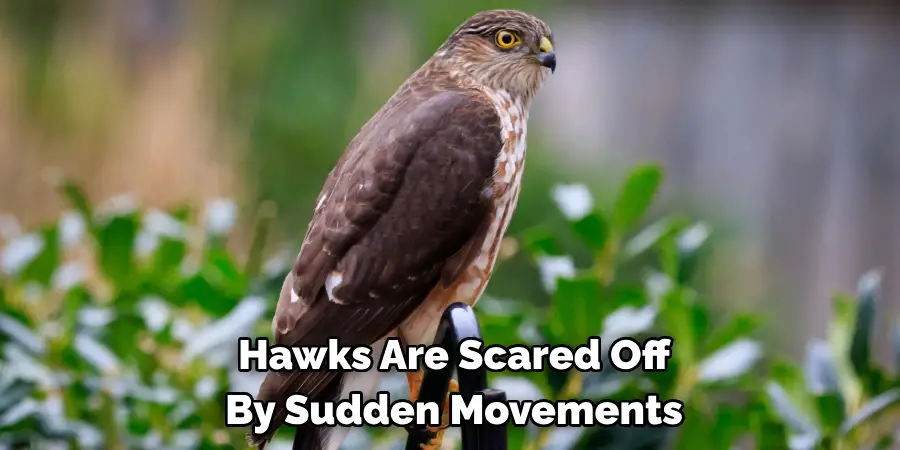
Step 2: Creating a Hawk-Resistant Poultry Environment
If you own poultry, it’s crucial to create a secure and hawk-resistant environment for them. This includes using fencing or netting material to cover enclosures and keeping feed and water sources away from open areas where hawks can easily spot them. You can also consider using roosting deterrents on top of enclosures to prevent hawks from perching and attacking from above. But be sure to leave enough space for your birds to move around comfortably. The goal is to make it challenging for hawks to access your poultry. It’s also essential to provide shelter for your birds to hide in case a hawk does attack.
Step 3: Scare Tactics and Visual Deterrents
Hawks are scared off by sudden movements and loud noises. You can utilize this fear with reflective tape or scare devices such as fake owls or hawks, which can be hung near areas where hawks are commonly seen. These devices mimic the appearance of a larger predator and may deter hawks from approaching. It’s important to regularly change the location of these scare devices to avoid hawks becoming accustomed to them. But keep in mind that these methods may not be effective against more experienced and determined hawks. It’s also essential to note that scare devices should not cause any harm to the hawks, as they are a protected species.
Step 4: Auditory Deterrents
Similar to visual deterrents, certain sounds can also scare off hawks. You can purchase devices that emit high-pitched noises, mimicking the distress calls of prey animals, which may deter hawks from entering your property. However, these methods may not be suitable for areas with noise restrictions or if you have neighbors nearby. The effectiveness of these deterrents may also diminish over time as hawks become used to the sound. You can switch between different sounds or use them sporadically to keep hawks on their toes. It’s essential to research which sounds are most effective for deterring hawks in your specific area.
Step 5: Raptor-Friendly Landscaping
If you’re a poultry owner, you may not have much control over the landscape of your property. But for those with open yards or gardens, creating a raptor-friendly environment can help deter hawks. Planting tall trees and shrubs can provide natural perching and hunting spots for hawks, reducing their need to seek prey in your yard. You can also consider installing bird feeders or nesting boxes to attract other birds and keep hawks occupied elsewhere. The key is to create a healthy and diverse environment for all types of birds. The presence of smaller birds can also provide an early warning system for potential hawk attacks.
Step 6: Building and Installing Roosting Platforms
Some species of hawks prefer to roost in open fields or on top of poles. You can build and install a designated roosting platform for hawks away from your property, providing them with an alternative and more suitable place to perch and hunt. This not only helps deter hawks from your property but also supports their natural behavior. If you’re not comfortable with the idea of attracting hawks to your property, consider working with a local wildlife expert to install the platform in a suitable location. But be sure to regularly maintain and clean the platform to prevent any potential health hazards.
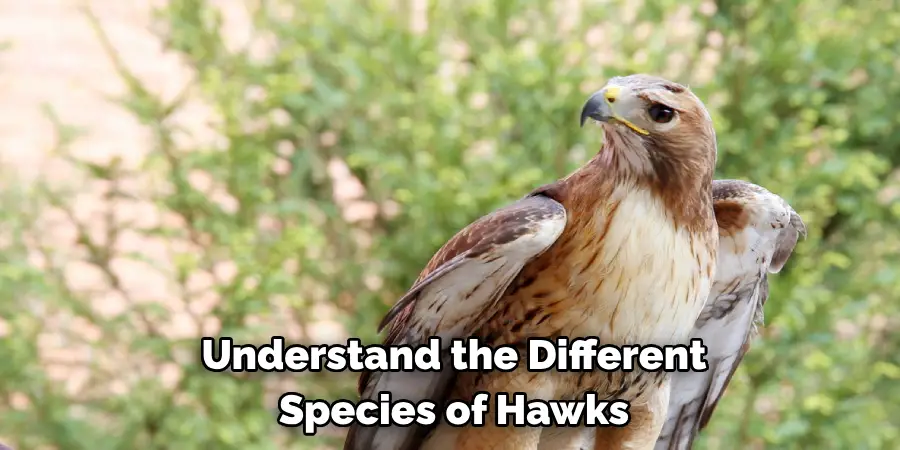
Step 7: Owl Decoys and Hawk-Friendly Predators
Owls are natural predators of smaller birds and can help keep hawks at bay. You can install owl decoys on your property, which may deter hawks from approaching. Similarly, having other predator-friendly animals in your yard such as cats or dogs can also discourage hawks from hunting in the area. The key is to create a balance of predator and prey animals in your environment, which can help control hawk populations. It’s important to note that having pets in an enclosed and secure area is crucial for their safety. You should never leave them unattended in areas where hawks are known to frequent.
Step 8: Hawk Identification and Licensing
It’s important to understand the different species of hawks and their behaviors to effectively deter them. For example, red-tailed hawks are known to be more aggressive and persistent in hunting compared to other species. If you’re experiencing repeated hawk attacks on your animals, it may be helpful to consult with a wildlife expert or obtain a permit for trapping and relocating problem hawks.

Be sure to research the laws and regulations in your area regarding trapping and relocating wildlife. It’s also important to note that killing hawks without a permit is illegal and can result in hefty fines and penalties. You can also consider joining local hawk-watching groups to learn more about these birds and their habitats in your area.
Step 9: Educating Poultry Keepers and Pet Owners
Educating yourself and others about hawk deterrent methods is crucial in creating a safe environment for your animals. Share your knowledge with other poultry keepers or pet owners in your area who may also be experiencing issues with hawks. You can also work together to implement effective deterrent strategies in the community, such as installing roosting platforms or using scare tactics. Raising awareness about the importance of protecting hawks while also safeguarding your own animals is essential for creating a sustainable and peaceful coexistence between humans and wildlife.
Overall on how to deter hawks, understanding hawks’ behavior and implementing appropriate deterrent measures can help keep your pets and livestock safe while also respecting the important role these birds play in maintaining a balanced ecosystem. With proper planning and management, you can create a harmonious environment for both your animals and hawks to thrive. So don’t let hawk attacks discourage you from raising poultry or enjoying the outdoors – with these steps, you can effectively deter hawks and protect your beloved animals. Keep learning and exploring new methods to keep your property a safe haven for all types of birds. Happy hawking!
Do You Need to Use Professionals?
If you’re experiencing persistent hawk attacks or are unsure about how to properly implement deterrent methods, it’s always best to seek guidance from a professional. Wildlife experts and licensed trappers can provide specialized knowledge and assistance in managing hawk populations while also ensuring the safety of your pets and livestock. They can also advise on legal regulations and ethical considerations when it comes to dealing with hawks. So don’t hesitate to reach out for help if needed – it’s always better to be safe than sorry.
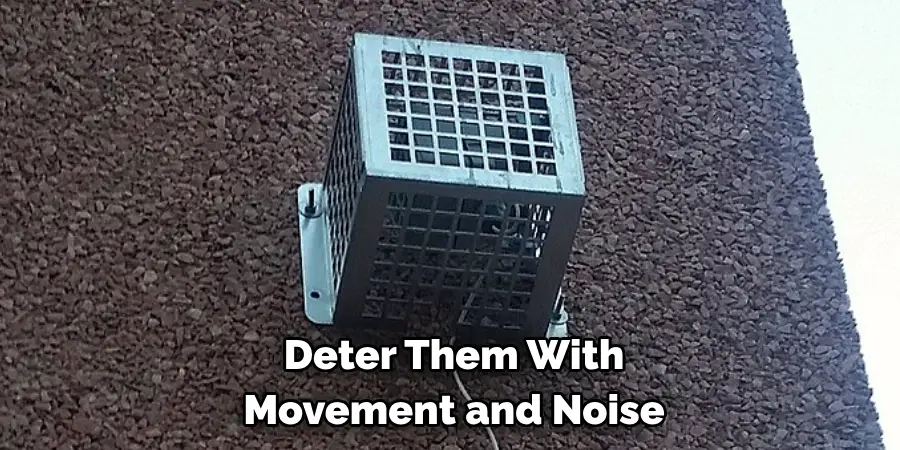
Keep in mind that hawks are protected under federal law, and harming or killing them without proper permits is illegal and can result in severe consequences. Working with professionals can ensure that all measures taken are humane, ethical, and effective in deterring hawks from your property. Together, we can create a balanced and sustainable relationship with these majestic birds of prey. So if you’re facing issues with hawks on your property, remember to stay calm, educate yourself on deterrent methods, and seek professional help when necessary. With the right approach and mindset, you can successfully deter hawks while also respecting their importance in our ecosystem
Additional Tips
- Installing Reflective Objects or Noise-making Devices Near Your Property Can Also Deter Hawks From Approaching, as These Birds Are Easily Startled by Sudden Movements and Loud Sounds.
- Consider Using Natural Deterrents Such as Predator Urine or Decoy Animals to Create the Illusion of a Dangerous Environment for Hawks. However, Be Cautious When Using These Methods as They May Also Affect Other Wildlife in the Area.
- Keep Your Property Clean and Free of Potential Food Sources, Such as Garbage or Compost Piles, Which May Attract Smaller Animals That Are Prey for Hawks.
- If You Have a Large Property, Consider Creating Designated Areas Where Your Pets or Livestock Can Safely Roam Without Being Exposed to Hawk Attacks. This Can Be Done by Using Fencing or Netting to Create Enclosed Spaces.
- Remember to Always Document Any Hawk Attacks or Sightings in Your Area and Report Them to Local Wildlife Authorities. This Information Can Be Helpful in Monitoring and Managing Hawk Populations.
- Don’t Give Up on Raising Poultry or Enjoying Nature Just Because of a Few Hawk Attacks. With Proper Precautions and Management, You Can Peacefully Coexist With These Amazing Birds of Prey. So Stay Informed, Be Proactive, and Continue to Learn About Effective Methods for Deterring Hawks.
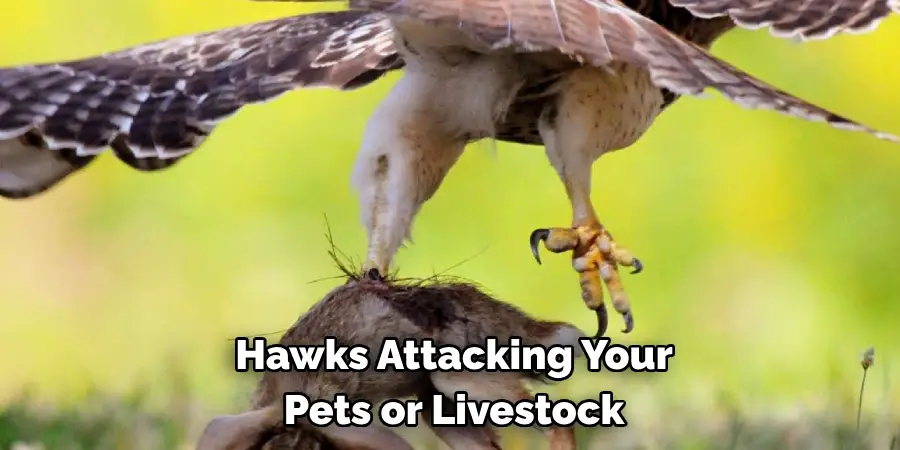
Frequently Asked Questions
Q: Are Hawks Protected Under the Law?
A: Yes, most hawk species are protected by federal and state laws. It is illegal to harm or kill hawks without a permit. The laws also vary depending on the species and location, so it’s important to research and understand the regulations in your area. You can contact your local wildlife agency for more information. It is always best to seek guidance from a professional when dealing with hawks.
Q: Can Hawks Carry Away Small Pets?
A: While hawks are known to hunt and feed on small prey, they typically do not have the strength to carry away animals that weigh more than a few pounds. However, it’s always best to supervise small pets while outdoors and take necessary precautions to keep them safe from potential predators. But keep in mind that attacks on pets are rare and often occur when hawks are defending their territory or young.
Q: Do Hawk Deterrents Harm the Birds?
A: Most hawk deterrent methods are designed to startle and discourage hawks without causing harm. However, it’s important to regularly check and maintain these deterrents to ensure they are not causing any harm or injury to the birds. If you have concerns, consult with a wildlife expert for safer and more humane alternatives.
Q: Can I Train My Pet to Deter Hawks?
A: While some animals may naturally act as deterrents for hawks, it is not recommended to train or encourage your pets to actively confront or attack hawks. This can put them in danger and may also result in harm to the hawk. Instead, focus on implementing other deterrent methods to keep both your pets and hawks safe.
Q: How Can I Attract Other Birds to My Property?
A: Creating a diverse and healthy environment for birds can help attract other species, reducing the need for hawks to hunt in your yard. Planting native trees and shrubs, installing bird feeders and nesting boxes, and providing a clean water source are all ways to attract various types of birds. Consult with a local bird expert for specific recommendations on attracting birds to your property. Overall, creating a welcoming and thriving ecosystem can help discourage hawks from targeting your animals.

Conclusion
In conclusion on how to deter hawks, effectively deterring hawks involves a combination of preventative measures, habitat alteration, and the use of safe deterrents. By understanding the behavior of hawks and implementing strategies such as scare tactics, reflective objects, and establishing a protective cover for smaller animals, one can minimize the presence of hawks in a given area. Remember that hawks are protected under various wildlife regulations, so it is essential to approach hawk deterrence with methods that are both humane and legal. By doing so, one can maintain a balanced ecosystem while protecting smaller pets and wildlife.

